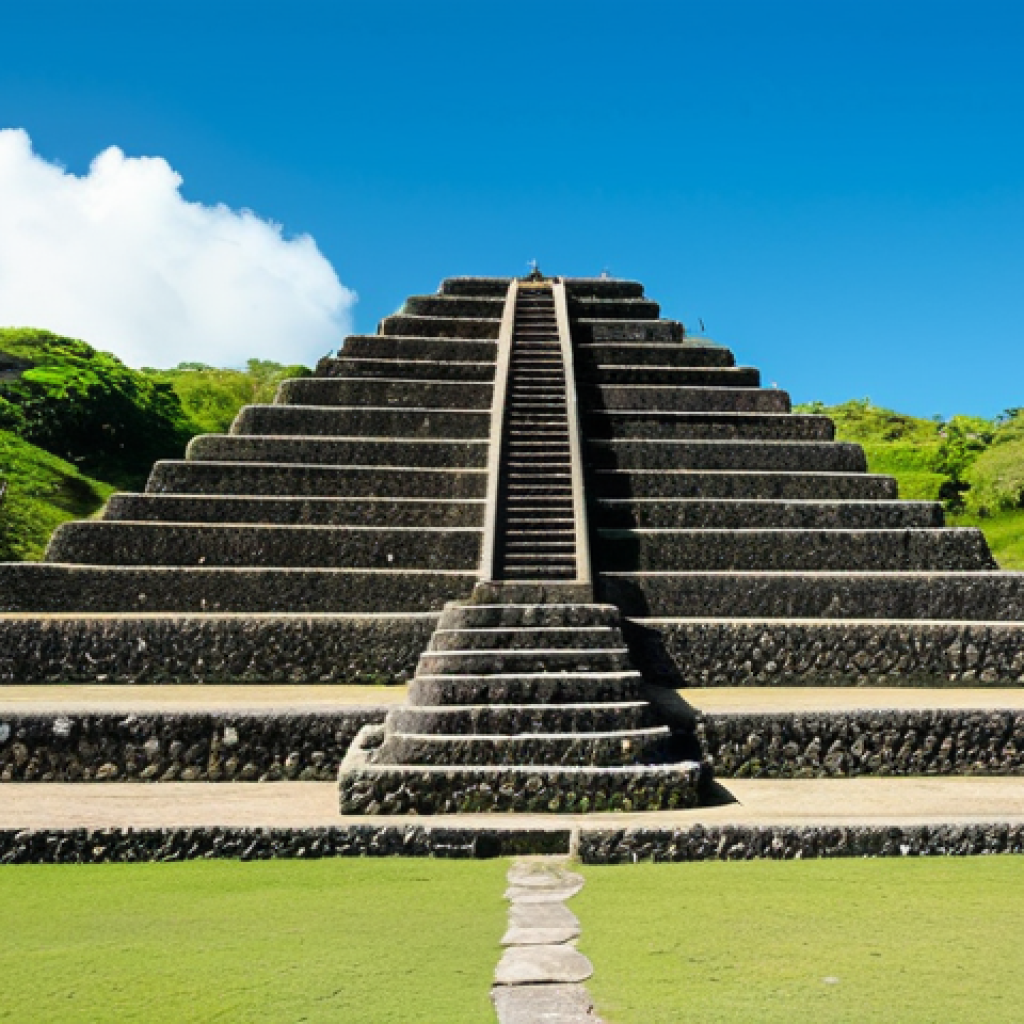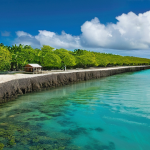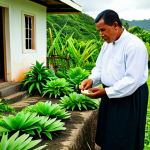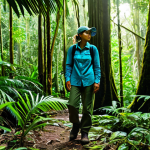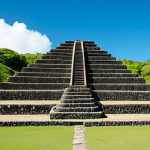Stepping onto the ancient grounds of Tonga for the very first time, I felt an indescribable shiver – not from the Pacific breeze, but from the palpable weight of history and spirit.
It’s easy to get lost in the azure waters and lush landscapes, but what truly grounds you here are the sacred places, the very heartbeat of this island nation.
These aren’t just old stones; they are living testaments to Tongan heritage, echoing with ancestral whispers and stories of profound reverence. In a world craving authentic experiences, these sites offer a rare, deep dive into Polynesian spirituality, a testament to resilience amidst shifting global tides.
Let’s find out exactly what makes these Tongan treasures so profoundly special. What struck me most was how seamlessly the ancient past intertwines with the living present in these sacred spaces.
I remember visiting a particular ancient burial mound, feeling a deep sense of peace that transcended time, a stark contrast to the digital noise of our modern lives.
It wasn’t just a physical place; it was a conversation with generations long past, a connection that felt deeply personal. You see, these sites are now experiencing a delicate balance: on one hand, there’s a growing global fascination, fueled by online searches and the rise of responsible tourism seeking genuine cultural immersion.
On the other, they face the harsh realities of climate change, with rising sea levels threatening coastal archaeological sites, and the ongoing challenge of preserving oral traditions in a rapidly evolving world.
Future predictions suggest a heightened focus on digital preservation and virtual experiences to share these stories globally, perhaps even augmented reality tours that allow for deeper understanding without physical impact.
However, nothing truly replaces the raw, emotional power of standing there yourself, feeling the earth beneath your feet, and sensing the echoes of Tongan history.
The Echoes of Ancient Royalty: Where Chiefs Rest
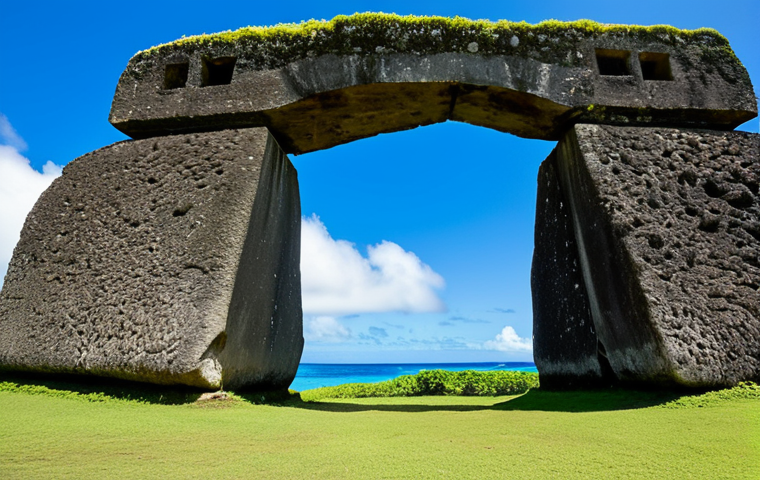
As I delved deeper into Tonga’s spiritual heartland, the sheer weight of history at places like the *Langi* or royal burial mounds became profoundly clear.
These aren’t just mounds of earth; they are vast, intricately constructed tombs, some dating back nearly a thousand years, built for the Tu’i Tonga, the ancient kings of this island nation.
Standing amidst them, I felt a peculiar sensation, as if the very air hummed with the spirits of past rulers. It’s an incredibly humbling experience to walk on ground that once hosted such immense power and spiritual significance.
The sheer scale of effort involved in their construction, moving massive coral slabs without modern machinery, speaks volumes about the reverence and authority these chiefs commanded.
It’s a testament to a society deeply rooted in hierarchy and a profound respect for their lineage, believing that the spirit of the land and its people are intrinsically linked to their ancestral leaders.
Each *Langi* tells a silent story of a dynasty that shaped a kingdom, laying the groundwork for the modern Tonga we know today, a fascinating blend of ancient tradition and contemporary life.
1. Decoding the Design: Architecture of Sacred Power
The design of the *Langi* isn’t random; it’s a deliberate architectural expression of power and cosmology. From what I learned, each *Langi* typically consists of several tiered platforms, often faced with huge, precisely cut coral slabs.
Some mounds reach impressive heights, creating a distinct presence against the landscape. I remember one particular site where the coral blocks were so perfectly fitted, without mortar, that it felt like peering into an ancient, meticulously crafted puzzle.
This monumental effort wasn’t just about durability; it was a physical manifestation of the Tu’i Tonga’s divine connection and their enduring legacy. The higher the tiers, the greater the chief’s status, symbolizing their elevated position in society and their closeness to the heavens.
It makes you wonder about the ingenuity and communal effort required to move such colossal stones, often quarried miles away, suggesting a highly organized and motivated workforce driven by deep spiritual conviction.
2. Personal Reflections: Silence and Ancestral Whispers
Visiting these burial sites wasn’t just a sightseeing trip; it was a deeply personal journey into the heart of Tongan heritage. There’s an undeniable silence that pervades these places, broken only by the gentle rustle of leaves or the distant sound of the ocean.
It’s a silence that invites contemplation, prompting you to reflect on your own place in time and the vast tapestry of human history. I found myself just sitting, letting the ancient energy wash over me, trying to imagine the elaborate funeral rites and ceremonies that must have taken place centuries ago.
It felt like a direct, albeit silent, conversation with the ancestors, a rare opportunity to connect with a past that feels both distant and intimately present.
The profound sense of peace and reverence I experienced there is something I carry with me still.
Mysteries Etched in Stone: Unveiling Tonga’s Megaliths
Beyond the royal tombs, Tonga is home to other enigmatic megalithic structures that stand as silent sentinels of a forgotten past. The most famous of these is the Ha’amonga ‘a Maui, or the “Burden of Maui,” a colossal trilithon – three massive coral stones forming an archway.
Its very existence raises more questions than answers, leaving archaeologists and historians scratching their heads. Was it a gateway to another realm, a calendar, or perhaps an ancient astronomical observatory?
Standing beneath its immense archway, I felt dwarfed by the sheer scale of human ambition and ingenuity. It felt like touching the very fabric of mythology, as local legends attribute its construction to the demigod Maui himself, who supposedly carried these stones from afar.
These sites aren’t just geological formations; they’re profound puzzles embedded in the Tongan landscape, challenging us to imagine a time when people possessed knowledge and skills we can barely comprehend today.
The air around them seems charged with unspoken stories, inviting you to ponder the deeper meanings behind their placement and purpose.
1. The Enigma of Ha’amonga ‘a Maui: Theories and Legends
The Ha’amonga ‘a Maui is arguably Tonga’s most iconic ancient structure, and its purpose remains hotly debated. Legend has it that the demigod Maui fished up the Tongan islands from the seabed and, as a test of strength, erected this massive gateway.
However, more pragmatic theories suggest it was built by a Tu’i Tonga king in the 13th century, possibly as a royal gateway, an astronomical calendar, or even a symbol of unity.
I personally found myself leaning towards the astronomical theory, given the precise alignment of some of its features with solstices and equinoxes. Imagine ancient Tongans, without telescopes, meticulously tracking the sun’s movements using these stones!
It speaks volumes about their sophisticated understanding of the cosmos and their environment. The mystery, I think, is part of its charm; it allows us to dream and connect with the imaginative spirit of our ancestors.
2. Other Stone Secrets: Lesser-Known Megalithic Sites
While the Ha’amonga ‘a Maui steals the spotlight, Tonga is dotted with other smaller, yet equally intriguing, stone structures and alignments. Some are simple standing stones, others are remnants of ancient fortifications or ceremonial grounds.
I heard tales of hidden caves with petroglyphs and isolated stone platforms that once served as places for tribal meetings or sacred rituals. These less-visited sites often offer a more intimate connection to the past, as they are less disturbed by tourist traffic.
Exploring them feels like uncovering a personal secret, a quiet whisper from centuries ago. They might not be as grand, but their sheer number and distribution across the islands hint at a widespread culture that valued permanence and the power of stone to convey meaning.
They remind me that history isn’t just in grand monuments, but also in the subtle marks left on the landscape.
Connecting with the Divine: Spiritual Sanctuaries and Their Rituals
Beyond the obvious archaeological sites, many places in Tonga hold sacred significance due to their historical connection to spiritual practices, ancient deities, or pivotal events in Tongan cosmology.
These aren’t always marked by grand structures, sometimes it’s a specific banyan tree believed to house spirits, a particular pool of water used for purification rituals, or a secluded cave once frequented by priests.
What captivated me most was the way these “living” sacred spaces are still revered and integrated into the daily lives and beliefs of the Tongan people.
It’s a testament to the enduring power of their traditional faith, often interwoven with Christian beliefs in a unique syncretism. I remember speaking with a local elder who described a specific grove of trees near her village as a place where her ancestors would gather to seek guidance, and her reverence for it was palpable, almost as if she could still hear their voices.
These are the places where the veil between the physical and spiritual realms feels thinnest, offering a profound sense of connection to something larger than oneself.
1. Sacred Groves and Pools: Where Ancestors Convene
Many traditional Tongan spiritual practices revolved around nature. Groves of ancient trees, particularly banyans with their sprawling roots, were often considered sacred, serving as meeting points for spirits and humans.
Similarly, certain freshwater pools or coastal inlets were used for purification rites or as places to offer tributes to sea deities. I recall visiting a serene, almost hidden, pool where locals still leave small offerings, not out of superstition, but out of a deep respect for the place and its history.
It’s not about grand temples, but about a deep, intuitive understanding of the land and its spiritual power. These are the spots where one truly understands the concept of ‘ʻainga’, the deep connection to land and lineage that defines Tongan identity.
2. The Role of Priests and Shamans: Mediators of the Sacred
In ancient Tonga, priests (ʻulafala) and shamans played a crucial role in mediating between the human and spiritual worlds. They interpreted omens, performed rituals, and offered guidance.
While their overt practices have largely been replaced by Christianity, the memory and respect for their traditional roles persist, often subtly influencing contemporary spiritual life.
Learning about their rituals, which sometimes involved elaborate ceremonies and specific offerings at these sacred sites, gave me a deeper appreciation for the complex spiritual tapestry of pre-colonial Tonga.
It truly highlights how deeply intertwined daily life was with spiritual observance, making every act, every location, potentially imbued with sacred meaning.
Guardians of Oral Tradition: Sacred Storytelling Landscapes
Tonga’s history and spiritual beliefs are not solely etched in stone; they are vibrantly alive in its rich oral traditions, passed down through generations.
Many sacred places are inextricably linked to specific myths, legends, and historical narratives that explain the very fabric of Tongan society and its cosmology.
Walking through these landscapes with a Tongan guide, listening to them recount stories of gods, heroes, and ancient battles, transformed the experience from mere sightseeing into an immersive journey through a living cultural archive.
It’s like the land itself becomes a giant book, with every hill, cave, and shoreline whispering tales of the past. The warmth and passion in their voices as they shared these stories, some passed down verbally for hundreds of years, truly conveyed the power of these narratives to shape identity and understanding.
It’s a vivid reminder that culture isn’t static; it’s a dynamic, breathing entity.
1. Myths Embodied: Connecting Legend to Land
Many Tongan myths are directly tied to geographical features. For instance, stories of the demigod Maui are not just abstract tales; they are often narrated while pointing to specific rock formations or islands that he supposedly created or interacted with.
This tangible connection between myth and landscape makes the stories incredibly vivid and real. I heard one fascinating account of a certain rock formation that was said to be the petrified remains of an ancient chief who defied the gods.
It makes you realize how every part of the environment, even seemingly mundane features, could hold profound narrative and spiritual significance for the people.
It’s a brilliant way to ensure stories endure, as the land itself becomes the mnemonic device.
2. The Art of Fai’umu: Storytelling and Community Gatherings
Traditional storytelling, often accompanied by *fai’umu* (earth oven cooking) and kava ceremonies, was a cornerstone of Tongan cultural life. These gatherings were not just social events; they were vital platforms for transmitting history, genealogy, and spiritual knowledge, often at specific, revered locations.
Imagine sitting under the stars, the aroma of slow-cooked food filling the air, as elders recount epic sagas and ancient proverbs, linking them to the very ground you sit on.
This communal aspect of storytelling at sacred spots deepens the cultural experience, transforming isolated historical sites into vibrant, living centers of community and memory.
It truly reinforced for me that the sacred isn’t just about static monuments, but about the shared human experience within a particular landscape.
A Legacy Under Threat: Preserving Tonga’s Priceless Heritage
While Tonga’s sacred sites are incredibly resilient, they face growing threats in the modern era. Climate change, with its relentless march of rising sea levels and intensified storms, poses an existential danger to low-lying coastal archaeological sites.
Erosion is already claiming parts of ancient burial grounds, slowly washing away irreplaceable pieces of history. Beyond environmental challenges, the encroachment of modern development, coupled with a shifting generational interest in traditional knowledge, also presents significant hurdles.
It’s a delicate balance: how do we share these treasures with the world responsibly while ensuring their preservation for future generations? I felt a real pang of concern seeing some of the erosion, realizing that these testaments to a rich past could be lost forever if proactive measures aren’t taken.
1. The Silent Erosion: Climate Change’s Impact on Coastal Sites
Tonga, like many low-lying island nations, is acutely vulnerable to the effects of climate change. Rising sea levels are a direct threat to coastal sacred sites, including ancient settlements and burial mounds located near the shore.
I saw evidence of this firsthand, with parts of historical walls crumbling due to wave action. The increased frequency and intensity of cyclones also accelerate erosion, literally chipping away at these irreplaceable cultural artifacts.
It truly hit home that preserving these sites isn’t just about historical interest; it’s a critical fight against global environmental changes that are erasing cultural identity.
The urgency of the situation is palpable when you see the direct impact.
2. Balancing Tourism and Preservation: A Delicate Act
The growing interest in cultural tourism offers opportunities for revenue and awareness, but it also presents challenges. Increased foot traffic, inadvertent damage, and the commodification of sacred spaces are real concerns.
It’s a fine line between providing access for people like me to experience these wonders and ensuring their long-term protection. I believe responsible tourism, which emphasizes respect for local customs, minimal impact, and community involvement, is key.
It’s about educating visitors, fostering a sense of shared guardianship, and ensuring that any economic benefits flow back into the local communities and conservation efforts.
| Sacred Site Type | Significance | Preservation Challenge | Personal Observation |
|---|---|---|---|
| Royal Burial Mounds (Langi) | Tombs of ancient kings, symbolizing lineage and power. | Natural erosion, limited public access. | Profound sense of peace and history; humbling scale. |
| Megalithic Structures (e.g., Ha’amonga ‘a Maui) | Ancient monuments, possibly astronomical or ceremonial. | Weathering, interpretive signage needed. | Dwarfed by their size, felt the weight of ancient mystery. |
| Natural Sacred Sites (Groves, Pools) | Places tied to traditional spiritual rituals and ancestral reverence. | Development encroachment, oral tradition loss. | Felt a deeper connection to living traditions and local beliefs. |
My Personal Reflections: Walking Through Sacred Tongan Time
My journey through Tonga’s sacred sites wasn’t just a series of visits; it was a deeply transformative experience that reshaped my understanding of history, spirituality, and cultural resilience.
Each step felt like traversing not just geographical space, but also centuries of time, connecting with a people whose reverence for their past is woven into the very fabric of their present.
I learned that sacredness isn’t always about grand temples or ornate rituals; often, it’s about the quiet whispers of the wind through ancient trees, the feel of sun-warmed coral stones, or the profound sense of connection to a lineage that stretches back to the mythical dawn of time.
It’s an emotional journey, one that leaves you with a heightened appreciation for indigenous knowledge and the universal human need to connect with something greater than ourselves.
I truly felt my perspective broaden, realizing that true wisdom often lies in understanding and respecting diverse ways of seeing the world.
1. A Sensory Journey: Feeling the Past Underfoot
More than what I saw, it was what I *felt* at these sites that left the most lasting impression. The rough texture of the coral stones beneath my fingers, worn smooth by centuries of rain and sun; the earthy scent of the ancient soil; the way the light filtered through the canopy of old trees.
These weren’t just visual experiences; they were sensory encounters that deepened my connection to the past. It felt like the land itself was communicating, sharing secrets that words alone couldn’t convey.
This tactile engagement brought the history to life in a way no textbook ever could, making the ancient world feel remarkably present and tangible.
2. Lessons in Resilience: The Enduring Spirit of Tonga
Witnessing how Tonga actively preserves and integrates its sacred past into modern life taught me an invaluable lesson about cultural resilience. Despite centuries of colonial influence and global changes, the core of Tongan identity, rooted in these ancestral lands and traditions, remains incredibly strong.
It’s a powerful testament to the human spirit’s ability to adapt, evolve, and yet retain its essence. I felt a profound respect for the communities dedicated to maintaining these sites and sharing their stories, acting as true guardians of their heritage against the tide of globalization.
Their quiet determination left a deep impression on me.
The Future of Sacred Sites: Balancing Access and Preservation
Looking ahead, the fate of Tonga’s sacred sites hinges on a delicate balance between increasing global awareness and ensuring their long-term preservation.
There’s a growing recognition worldwide of the importance of cultural heritage, particularly from indigenous communities, and Tonga’s sites offer a unique window into Polynesian history.
However, this recognition must be paired with proactive, sustainable strategies. I envision a future where technology plays a significant role in both preservation and education, but never at the expense of the raw, immersive experience that makes these places so special.
The challenge is immense, but the dedication of the Tongan people and the growing global interest give me hope that these precious windows into the past will endure for generations to come.
It’s a shared responsibility, one that requires international cooperation and local leadership working hand-in-hand.
1. Digital Preservation and Virtual Accessibility
One promising avenue for the future of these sites lies in digital preservation. Techniques like 3D scanning, photogrammetry, and virtual reality can create detailed digital archives of the sites, preserving them even if physical erosion occurs.
This also opens up possibilities for virtual tours, allowing people worldwide to experience the grandeur of the Ha’amonga ‘a Maui or the serenity of the Langi, even if they can’t travel to Tonga.
While nothing replaces being there, these tools can vastly expand access and understanding, fostering global appreciation for Tongan heritage. I believe this can be a powerful educational tool for future generations.
2. Community-Led Conservation and Education
Ultimately, the most effective preservation strategies are those led by the local communities themselves. Empowering Tongan people, especially younger generations, with the knowledge and resources to manage and interpret their own sacred sites is crucial.
This includes supporting traditional knowledge keepers, developing educational programs for schools, and fostering a sense of pride and ownership. During my visit, I felt the deep connection locals had to their land, and I firmly believe that this inherent connection is the strongest safeguard for these invaluable historical and spiritual treasures.
Their passion is contagious and inspires confidence in the future of these sites.
Concluding Thoughts
As my journey through Tonga’s sacred landscapes drew to a close, I carried with me not just memories, but a profound shift in perspective. These ancient sites aren’t mere relics of a bygone era; they are living testaments to an enduring spirit, whispering stories of kings, gods, and resilience.
My experience deepened my appreciation for indigenous heritage and reminded me that true connection often lies in feeling the earth beneath your feet and listening to the echoes of ages past, a powerful reminder of our shared human history.
Useful Information
Respect the Sacred: When visiting these ancient sites, always remember they hold deep cultural and spiritual significance for Tongans. Be mindful of your actions, avoid climbing on structures, and ask for permission before taking photographs, especially if people are present.
Engage Local Guides: While exploring independently is an option, I highly recommend hiring a local guide. Their insights into the history, legends, and cultural context will profoundly enrich your experience and provide an invaluable connection to the living heritage of Tonga.
Best Time to Visit: The dry season (May to October) offers the most pleasant weather for exploring, but visiting during shoulder seasons might offer fewer crowds and a more intimate experience. Check local calendars for any traditional events that might enhance your visit.
Dress Appropriately: Tonga is a conservative country, and modesty is appreciated, especially at sacred or formal sites. Opt for respectful attire that covers your shoulders and knees to show deference to local customs.
Plan Your Logistics: Some sites are easily accessible, while others might require a bit more planning for transport. Consider renting a car, hiring a taxi, or joining a guided tour to ensure you can reach all the locations you wish to explore efficiently.
Key Takeaways
Tonga’s sacred sites offer an unparalleled window into ancient Polynesian history, spiritual beliefs, and cultural resilience. From the awe-inspiring royal burial mounds to the enigmatic megaliths and living sacred groves, these places are deeply intertwined with Tongan identity and oral traditions.
While facing modern threats like climate change, their preservation is crucial, necessitating a careful balance between tourism, community involvement, and innovative conservation efforts to ensure this priceless heritage endures for future generations.
Frequently Asked Questions (FAQ) 📖
Q: You mentioned a “deep sense of peace” and a “conversation with generations long past” when visiting these Tongan sacred places. How do you think these ancient sites manage to evoke such a profound and personal connection in visitors today, transcending time and modern distractions?
A: Oh, that’s something you just feel, isn’t it? I swear, stepping onto that ground, it’s not just dirt and stones; it’s like the very air hums with stories.
It’s the quiet reverence of the place, knowing that countless generations before you stood right there, their hopes and fears soaking into the earth. It’s not a museum, not really.
It’s a living memory, and you just become a part of that flow, a brief whisper in a long, unbroken lineage. It’s truly humbling, like the world outside with all its digital noise just melts away, leaving only this profound sense of connection.
Q: The text highlights a “delicate balance” for these sites, facing both growing global fascination and serious threats like climate change. What do you see as the most pressing challenges for preserving Tonga’s sacred heritage, and what efforts are being made to address them?
A: That balance is absolutely precarious, isn’t it? From what I saw and learned, the rising sea levels are a terrifying, immediate threat – some of these coastal archaeological sites are literally being eaten away by the ocean, piece by agonizing piece.
It’s heartbreaking. But then there’s the subtle, equally critical challenge of keeping the oral traditions alive. These aren’t just physical places; they’re intertwined with vibrant stories, ancient chants, and complex genealogies.
If those fade, the stones lose their voice. There’s a lot of passionate talk, real grassroots efforts, about digital preservation, capturing these stories, perhaps even those augmented reality tours to share the essence globally before it’s too late.
It’s a race against time, but there’s a strong local movement to ensure these voices aren’t silenced.
Q: Given the growing global fascination and the call for “genuine cultural immersion,” how can visitors approach these sacred Tongan sites responsibly to truly honor their profound significance, and what crucial element is lost if we only rely on digital or virtual experiences?
A: For me, it boils down to respect, first and foremost. Go with an an open heart and a quiet mind. If you can, absolutely connect with a local guide; their insights are invaluable – they’ll tell you stories the guidebooks never could, nuances about protocol, and the true spirit of the place.
Listen, observe, and remember you’re on sacred ground, not just a tourist attraction for a quick photo. As for digital experiences, sure, they can give you a glimpse, a fantastic starting point even.
But nothing, absolutely nothing, replaces feeling that Tongan earth beneath your feet, smelling the salty air mixed with the scent of frangipani, and sensing that deep, ancient quiet.
That raw, emotional power? That’s something no screen, no matter how high-tech, can ever truly transmit. You have to be there.
📚 References
Wikipedia Encyclopedia
구글 검색 결과
구글 검색 결과
구글 검색 결과
구글 검색 결과
